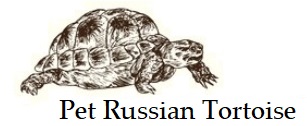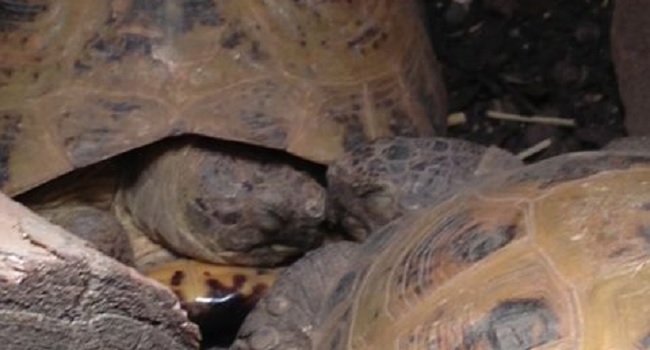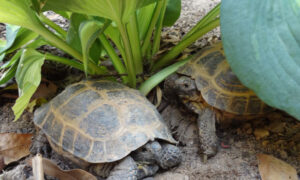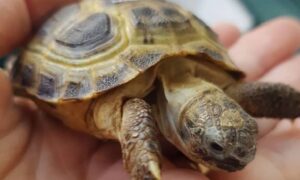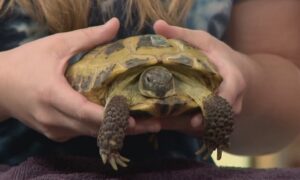Nocturnal animals are most active at night. They take the third shift in the animal kingdom. On the other hand, diurnal animals are most active during the day, taking the first shift, absorbing the sun and natural UV. Most tortoises are diurnal animals, and Russian tortoises fall into the diurnal category. That said, Russian tortoises are not nocturnal animals.
When are Russian Tortoises Most Active?
You may notice your Russian tortoise most active during the early morning and early evening hours.
Russian tortoises are most likely to be out walking around in search for food and basking when the temperatures are between 68°F – 89°F. Russian tortoises will remain in their burrows or shelter when the temperatures are cooler, and if it is too hot outside or in the enclosure, the tortoise will remain hidden to keep cool.
During the spring and early summer months, you’ll find Russian tortoises are the most active. During fall, they are preparing for hibernation, and during the winter months, Russian tortoises will hibernate. If you have your tortoise in an indoor enclosure, with stable temperatures, you may not notice the change in behavior based on seasons, which is fine.
Russian Tortoises Need Light
Because Russian tortoises are not nocturnal, it is important to provide a day/night schedule. When housing a Russian tortoise inside, it’s important to provide UV light. A UV light source will help the tortoise produce vitamin D3 and to properly absorb calcium and nutrients

